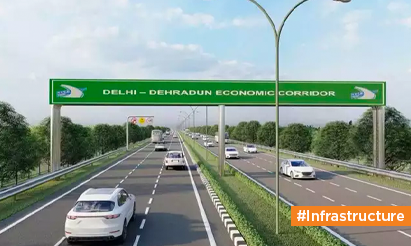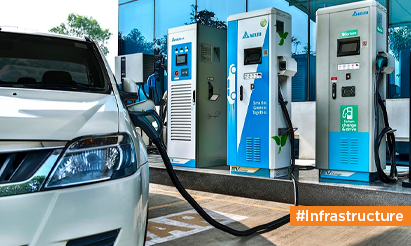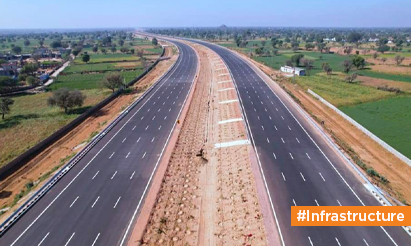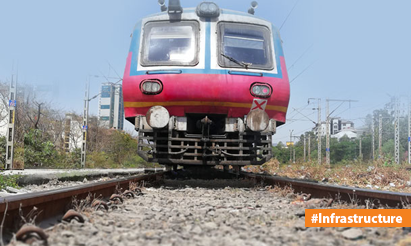A Sneak Peek into 5 New Expressways Opening in India in 2024
As India propels itself into a new era of infrastructure development, the year 2024 promises to be a landmark period with the inauguration of five new expressways across the country. This article aims to provide Indian readers with an insightful exploration of these upcoming expressways, delving into their significance, impact on connectivity, and the broader context of India’s ambitious infrastructure agenda.
- Mumbai-Delhi Expressway: Bridging the West with the Capital: The Mumbai-Delhi Expressway, one of the most anticipated projects, is set to redefine travel between two major metropolises. Stretching over 1,200 kilometers, this expressway aims to significantly reduce travel time between Mumbai and Delhi, bringing the two economic powerhouses closer. Equipped with state-of-the-art facilities, service areas, and rest zones, it promises a seamless and comfortable journey.
- Bengaluru-Chennai Expressway: A South Corridor Redefined: Connecting two bustling cities in South India, the Bengaluru-Chennai Expressway is poised to become a game-changer in regional connectivity. With a focus on reducing travel time and enhancing economic ties, this expressway is expected to boost trade, tourism, and overall accessibility between Karnataka and Tamil Nadu. Its strategic alignment will facilitate efficient transportation of goods and spur economic activities along its route.
- Kolkata-Jharkhand Expressway: Paving the Way for Eastern Growth: The Kolkata-Jharkhand Expressway signifies the government’s commitment to bolstering infrastructure in the eastern region. Linking Kolkata, the cultural capital, with the industrial hub of Jharkhand, this expressway is anticipated to stimulate economic development, attract investments, and foster easier movement of goods and people. Its role in connecting key centers in West Bengal and Jharkhand is poised to redefine the region’s economic landscape.
- Delhi-Meerut Expressway Extension: A Northern Artery Expands: The Delhi-Meerut Expressway, already operational and heralded for reducing travel time between the two cities, is set to undergo expansion. The extension aims to further enhance connectivity to neighboring areas, fostering development in regions like Ghaziabad and Meerut. This project aligns with the government’s vision of decongesting Delhi and promoting balanced urban growth in the National Capital Region (NCR).
- Amritsar-Jamnagar Expressway: Connecting the Northwestern Dots: The Amritsar-Jamnagar Expressway is a testament to India’s commitment to bolstering connectivity in the northwest. Linking the iconic city of Amritsar in Punjab with the vibrant industrial center of Jamnagar in Gujarat, this expressway holds immense potential for trade, tourism, and cultural exchange. It is expected to play a pivotal role in facilitating movement along the northwestern corridor, connecting key regions and fostering economic growth.
Significance of the New Expressways:
- Economic Growth and Trade Facilitation: These expressways are not merely stretches of asphalt; they represent economic arteries that will facilitate the smoother movement of goods and services. By reducing transit times and enhancing connectivity between major economic hubs, these projects are poised to stimulate regional economies and foster trade growth.
- Regional Connectivity and Balanced Development: The strategic placement of these expressways reflects a commitment to balanced regional development. Connecting cities and regions that were previously distant, these projects aim to reduce regional disparities, attract investments, and distribute economic activities more evenly across the country.
- Tourism Boost: Improved connectivity invariably leads to an uptick in tourism. As travel becomes more accessible and time-efficient, tourists are likely to explore new destinations along these expressways. This, in turn, can spur the development of tourism-related infrastructure, creating employment opportunities and promoting cultural exchange.
- Infrastructure Modernization: The new expressways are designed to meet international standards of infrastructure. Equipped with smart features, rest areas, and modern amenities, they reflect a commitment to providing commuters with a comfortable and efficient travel experience. This emphasis on modernization aligns with India’s aspirations to have world-class infrastructure that rivals the best globally.
- Environmental Considerations: Infrastructure development often raises concerns about environmental impact. However, these expressways are designed with a focus on sustainability. Incorporating green practices, afforestation initiatives, and eco-friendly design elements, they aim to minimize their carbon footprint and contribute to India’s commitment to sustainable development.
Challenges and Mitigation Strategies:
While the upcoming expressways promise transformative change, challenges may emerge during their implementation. Some potential challenges include land acquisition issues, environmental concerns, and the need for robust maintenance strategies. However, proactive measures such as community engagement, environmental impact assessments, and advanced maintenance protocols can help address these challenges and ensure the long-term success of these projects.
The unveiling of five new expressways in India in 2024 represents a pivotal moment in the nation’s quest for robust infrastructure and enhanced connectivity. Beyond being engineering marvels, these projects hold the potential to reshape regional dynamics, foster economic growth, and bring communities closer together. As India gears up for this transformative phase, the new expressways stand as beacons of progress, symbolizing the nation’s commitment to creating a well-connected and economically vibrant future.




